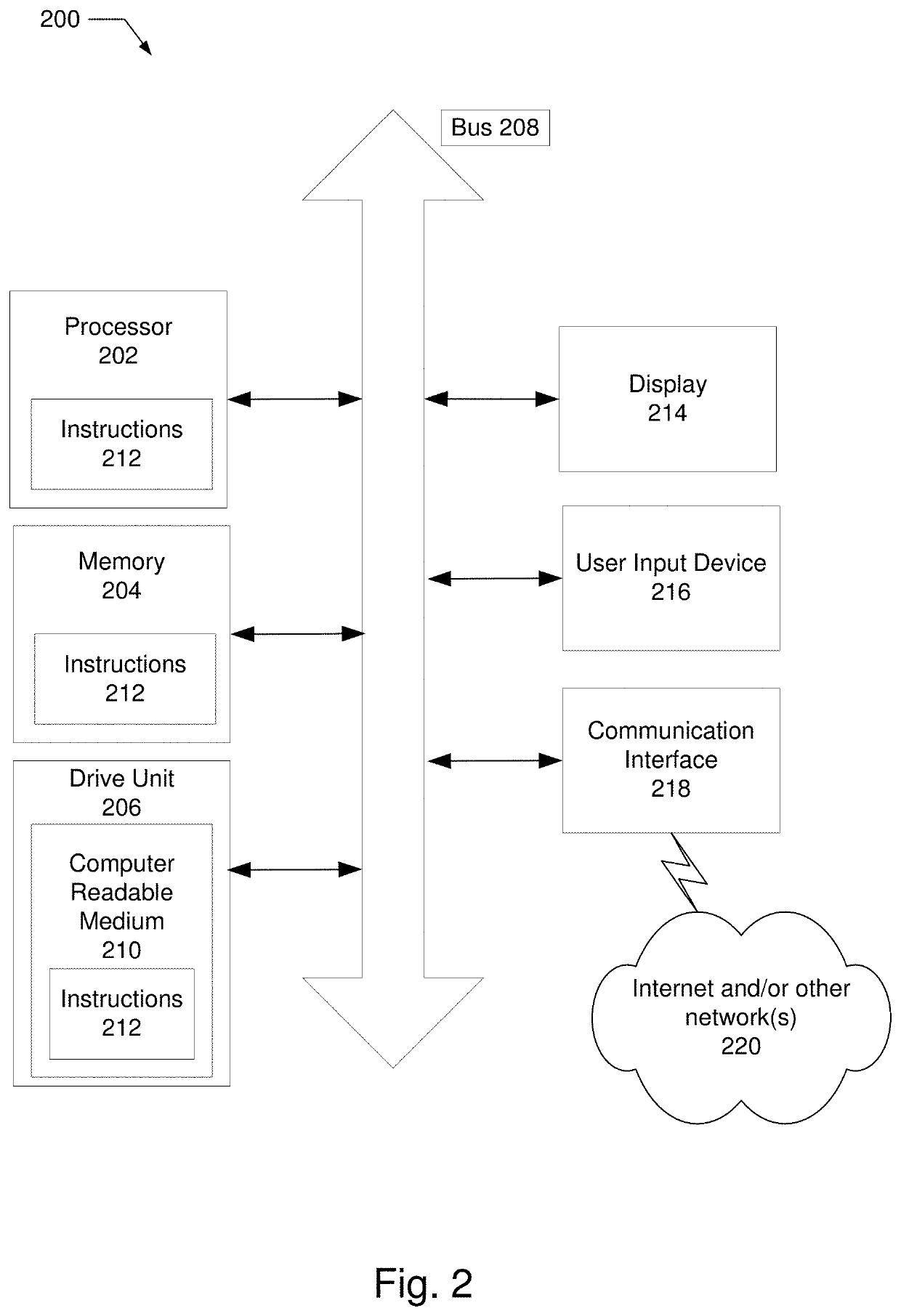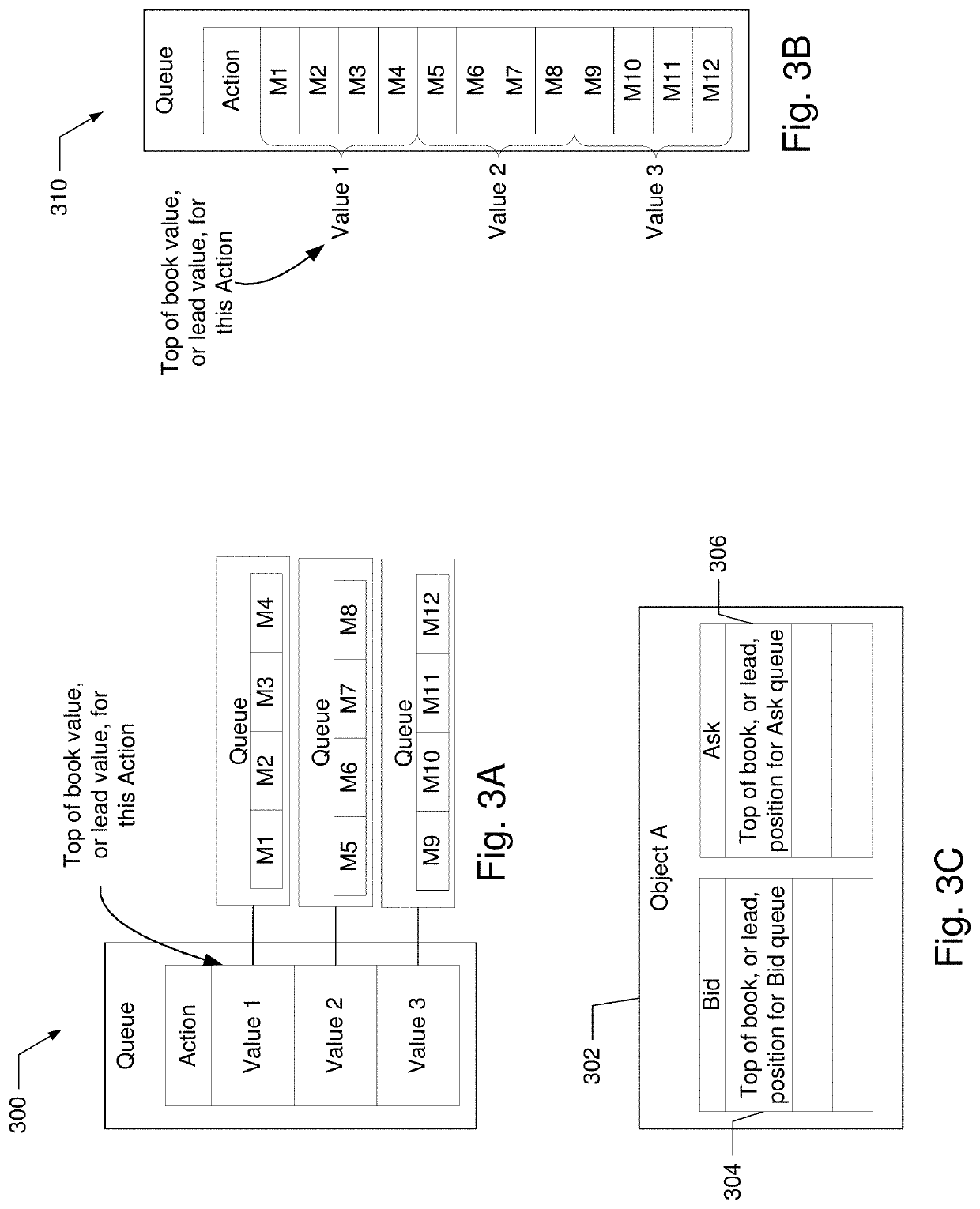However, most volatility indexes are typically derived from single assets or asset classes, and the very few existing multi-asset volatility indexes are simply arithmetic averages of front-month implied volatilities, which are typically inaccurate and unreliable as they include components that have differing expirations.
In addition, existing multi-asset indexes are complex, comprising multiple components that may be independently computed, many of which are computationally intensive and / or process large data sets that require an appreciable amount of time to be processed.
In many cases, the index calculations are not easily verifiable or cannot be calculated from publicly available and visible market data.
Exchange match engine systems may be subject to variable messaging loads due to variable market messaging activity.
With limited
processing capacity, high messaging volumes may increase the
response time or latency experienced by market participants.
In addition, it may be appreciated that
electronic trading systems further impose additional expectations and demands by market participants as to
transaction processing speed, latency, capacity and
response time, while creating additional complexities relating thereto.
However, messages, whether MBO or MBP, generated responsive to market impacting events which are caused by more than one order, such as a trade, may require the transmission of a significant amount of data to convey the requisite information to the market participants.
This may result in penalizing the trader who makes an errant trade, or whose underlying trading motivations have changed, and who cannot otherwise modify or cancel their order faster than other traders can submit trades there against.
Furthermore, while it may be beneficial to give priority to a trader who is first to place an order at a given price because that trader is, in effect, taking a risk, the longer that the trader's order rests, the less beneficial it may be.
However, a trader who took a risk by being first to place an order (a “market turning” order) at a price may end up having to share an incoming order with a much later submitted order.
This results in an escalation of quantities on the order book and exposes a trader to a risk that someone may trade against one of these orders and subject the trader to a larger trade than they intended.
In the typical case, once an incoming order is allocated against these large resting orders, the traders subsequently cancel the remaining resting quantity which may frustrate other traders.
In those markets, the failure of one participant can have a
ripple effect on the solvency of the other participants.
Conversely, CME's mark-to-the-market
system may not allow losses to accumulate over time or allow a
market participant the opportunity to defer losses associated with market positions.
However, identifying implied opportunities may be computationally intensive.
The creation of implied orders increases the number of tradable items, which has the potential of attracting additional traders.
In some cases, the outright market for the deferred month or other constituent contract may not be sufficiently active to provide market data (e.g., bid-offer data) and / or trade data.
As an intermediary to
electronic trading transactions, the exchange bears a certain amount of risk in each transaction that takes place.
If any one of the queues or components of the
transaction processing system experiences a
delay, that creates a backlog for the structures preceding the delayed structure.
For example, if the match or transaction component is undergoing a high
processing volume, and if the pre-match or pre-transaction
queue is full of messages waiting to enter the match or transaction component, the conversion component may not be able to add any more messages to the pre-match or pre-transaction
queue.
A computationally expensive task may be a task that requires a high amount of computing resources, or requires more computing time than may be available.
Additionally, the illustrations are merely representational and may not be drawn to scale.
 Login to View More
Login to View More  Login to View More
Login to View More 


